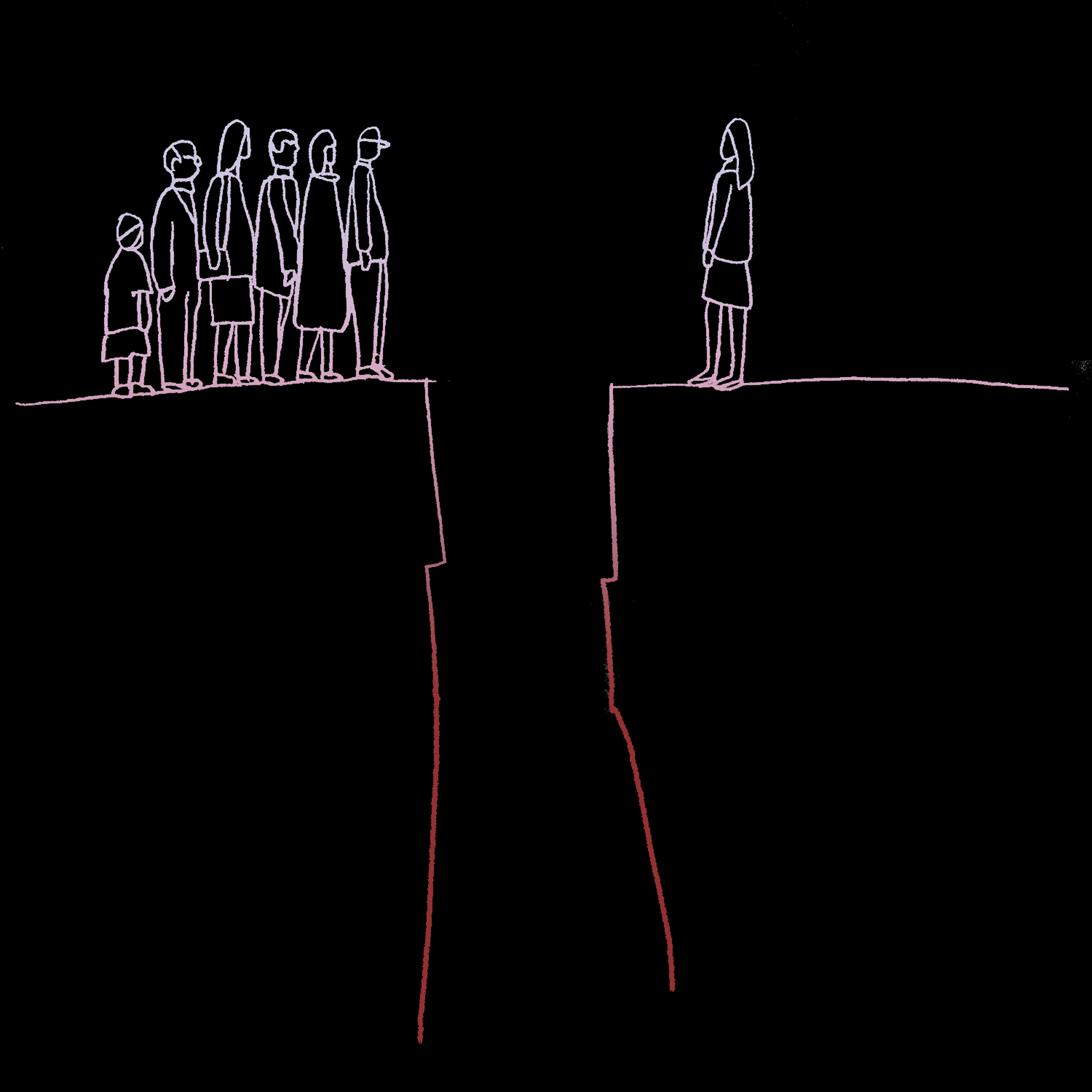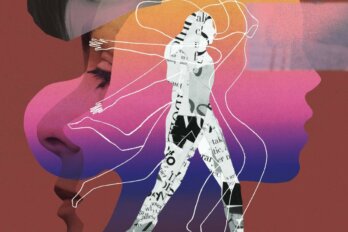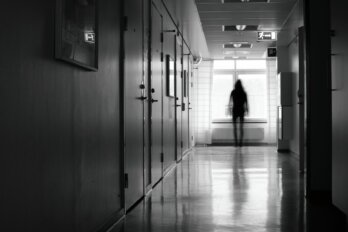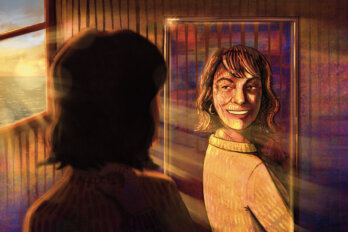This article contains discussion of suicide. If you or someone you know is having a suicide crisis, please call the Canada Suicide Prevention Service (1-833-456-4566), which offers 24/7 support. There is also Kids Help Phone (1-800-668-6868), the First Nations and Inuit Hope for Wellness Help Line (1-855-242-3310), and 1-866-APPELLE (for Quebec residents).
Author’s Note:
For ages, the dictate has been not to write honestly about suicide—not to mention even the word, never mind methods, lest, in referencing it directly, you prompt suicidal spirals in others. But you can’t tackle the endless abyss of wanting to die on tiptoes; that just leaves you with the half-hearted interventions we’ve pretended are the best society can do. I need to be faithful to the experience. This is how I felt, and this is how I acted; this is what people in despair are driven to do. These are the people we fail in myriad ways, and this is the cost of that failure.
What scares me most is what I don’t remember.
And that’s everything between scarfing sleeping pills on a Sunday night to waking fuzzily in the ICU days later, Velcro ties strapping my wrists and forearms to cold metal railings ringing the bed, keeping my erratic sedated writhing from disconnecting a maze of IVs plugged into veins. I discovered I was wearing a hospital gown and attached to a catheter (the latter, especially, not something you want to take you by surprise).
I was shocked when I surfaced at how much time had passed. I’ve no recollection of the hours on dialysis. Just the lasting image of a churning strawberry-red slushy machine, which is how my dad described the life-saving contraption days later. But my text messages and call history betray me: I’d offered, in a near blackout state, to rush out and report on a story that, mercifully, was taken on by someone else. When I asked about this later, the coworker who had called said I had just sounded groggy. No kidding.
I can’t remember being found in my apartment, overdosed on antifreeze, by two senior editors at the Globe and Mail, the newspaper where I worked at the time. Mortification overwhelms me each time I imagine the scene, and I still wish I’d died rather than be found that way.
That, in 2011, was my first suicide attempt, my first post-attempt hospitalization, and my entry point into a labyrinthine psychiatric-care system via the trap door of botched self-obliteration. For me, it was an inexorable resolution—the only possible culmination of a conviction I’d had for months but kept putting off.
I was twenty-four, and I’d just come off a pair of great assignments working as a staff reporter at my dream newspaper. But the preceding eighteen-odd months had been characterized by worsening, lengthening episodes of despair, during which all I wanted was to die. For a while I could still immerse myself in my work, could still get that reporter’s high, that bright weightless bubble filling my diaphragm as I chased a story. Could still convince myself, in giddy interludes, that my life had purpose.
But those interludes of story-chasing joy became spotty and infrequent, a radio signal subsumed by static. The bilious taste of failure swallowed everything. That late-September Friday, two days before the attempt, I put the final edits into a political feature as sheets of rain thrummed against the wall-wide newsroom window. The nadir that in recent months had begun to engulf me at the end of every story’s high was, this time, too deep to clamber out of. I felt scraped empty, nothing left and nowhere else to go.
I met family visiting from out of town for dinner that night at a fancy, poorly lit restaurant where, if you drink enough silky-cold gin, you don’t notice how little actual food is exquisitely plated in front of you. I vaguely recall acting stupid sentimental, but not much else.
Stopping at the downtown Toronto office to pick up some things on my way home, I did what later felt like the first dumb thing. An acquaintance—someone I’d met once who had subsequently added me on Facebook and with whom I’d exchanged muted messages during periods of mutual insomnia—struck up the most casual of “how you doing” online conversations. To which I responded that I was finally going to kill myself.
Ha ha, not funny
Not joking
Don’t kill yourself
But I want to
The exchange ended with my saying I probably wouldn’t do anything. Anyway, g’night. Talk to you later. I think this is when I deleted my social-media accounts.
I wouldn’t have said anything to Facebook Guy in the first place were it not for the tenuousness of our acquaintance and the atonality of online conversation, which left me feeling fairly confident he wouldn’t do anything.
Wrong. Wrong on all counts.
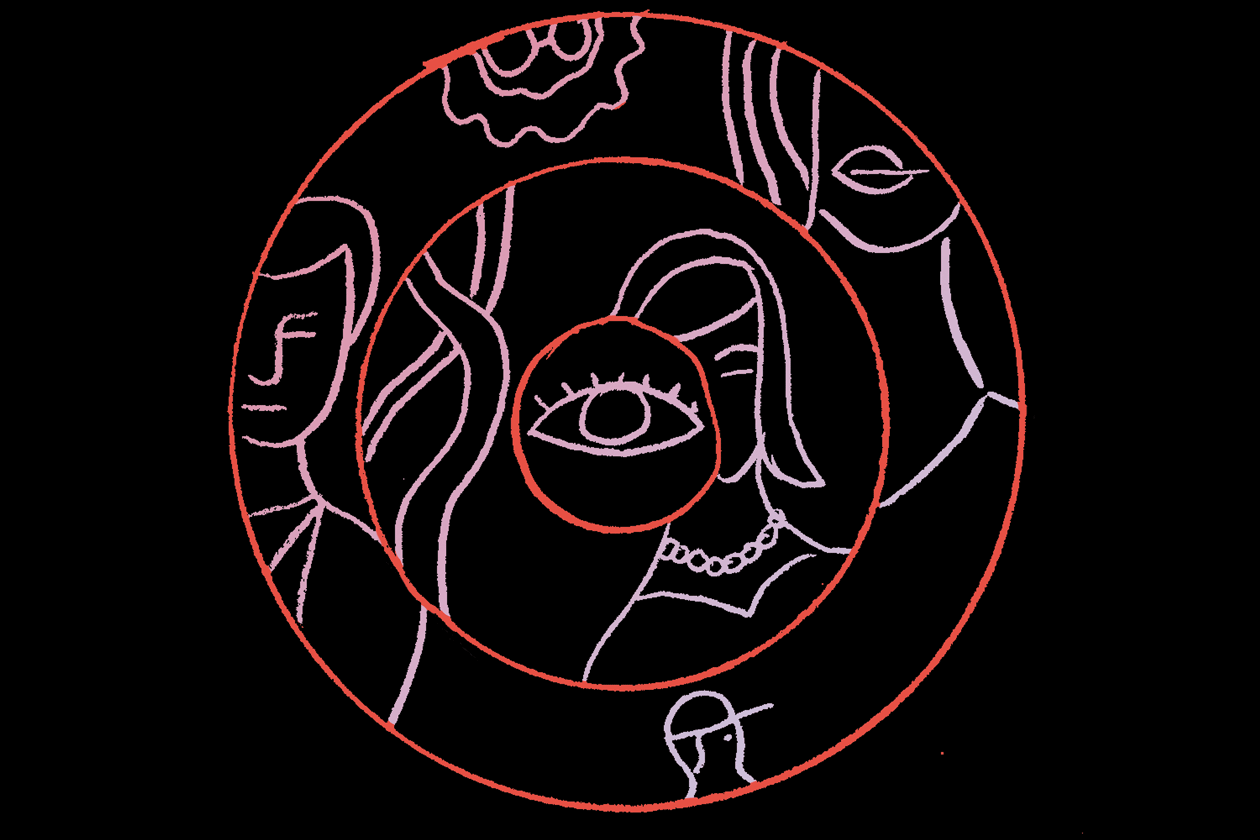
I didn’t kill myself that night. Didn’t even try. Crashing hard from serial work weeks without weekends and a boozy family dinner, I collapsed in my apartment and fell into zonked sleep, fully dressed on an unmade bed.
The second dumb thing was missing the incessant calls to my phone, left on vibrate. This poor dude I barely knew panicked. He contacted a mutual friend, who called me, then the police. It was their call that I finally surfaced from slumber to register. I was just out of it enough to see the blocked number and irrationally assume it was the desk—my editors—calling in the middle of the night with some urgent query or request. Workaholic reflexes overrode my desire to be eternally alone. Instead, it was a police officer wanting my address, and I, in sleepy half-stupor, gave it to him. Except then, of course, they came to my apartment.
I didn’t know how you’re supposed to respond when a pair of cops shows up at your door at three o’clock in the morning saying they’ve been sent because someone told them you’re trying to off yourself. The keenest emotion I recall was embarrassment.
If you’re ever picked up by police and carted off to hospital in the middle of the night, I recommend bringing a warm sweater and a good book (cell, charger, wallet, writing implements, and health card are also worthwhile accessories). I, short-sighted fool, was wearing the previous day’s skirt, a T-shirt, and a thin raincoat I’d grabbed groggily on the way to the police cruiser so I’d have a pocket for my keys, which were quickly confiscated, along with my phone, pen, and the digital recorder still in my jacket pocket from work, a day and a lifetime earlier.
The crisis ward was dark and bare and cold, and I was bored out of my mind. Curled up, shivering on a plasticky hospital chair, grimly suicidal, I mentally cursed Facebook Guy for freaking out when clearly—I told myself as I brooded on death—I hadn’t been serious. Kicked myself for caving to the desire for human contact and then not even bothering to try to follow through on my own death.
I was almost demented with fatigue. I remember someone offering me a bed, which I declined—afraid that acquiescing would mark me a patient, someone who belonged there, no different from the bedridden man quietly moaning behind me. I didn’t belong, I told myself. I just needed to clear up this misunderstanding.
A young kid—fourteen, maybe—regained consciousness in an adjoining room. The orderly returning his backpack had to explain to him how he’d wound up there after police found him unconscious and alcohol poisoned at a friend’s house party. For the next six hours, I sat there, envying his escape. The blessed orderly took pity on me when the paper arrived; I’ve never been so glad to see the flyer-filled Saturday Star. By the time a tired-eyed psychiatrist saw me, around nine o’clock, I would have said anything to get out of there so as to kill myself as soon as possible.
It became immediately clear she had no idea I’d been brought to the hospital’s psychiatric crisis ward in a cop car, against my will: when I said I didn’t want therapy, just wanted to go home (with some pills to help me sleep, please), she gave me a withering, pitying look as if to ask why I was wasting her time. By ten o’clock, I was out in the sharp, bright morning making a beeline for a pharmacy to fill a disappointingly small prescription for sleeping pills—the ones I would take all at once the next day.
The rest of Saturday was strange. I think I slept. I think I tried to go for a run along the lake but couldn’t muster much energy, run-walking and petering out about a kilometre from my apartment, on a rocky outcrop on the Etobicoke side of the Humber Bay Bridge. Pacing the rocks, I exchanged a surreal series of short emails with a colleague who’d heard about my night in the crisis ward and was tentatively trying, it seemed, to make sure I was okay without becoming embroiled in whatever weird life drama I had going on. Accustomed as we’ve become to communicating textually, I can tell you there are times when hearing someone’s voice—as anxiety inducing and time consuming as that can be for the caller—would make a big difference.
I knew better by then than to say how I felt. “I’m fine. Really. Don’t worry.”
I think I would have tried to kill myself that night were it not for an unexpected Sunday assignment, a campaign budget announcement for which I felt obliged to stay alive. I remember astonishing watery sunlight and cold wind whipping wet hair against my face as I biked downtown Sunday morning. I negotiated the incongruous banality of a technical briefing in a windowless hotel conference room. I remember joking with a fellow journo about our lack of math skills. There was a scrum, something about provincial debt, something about early voting; a web file that needed updating and contextualizing; counterclaims from opposing parties to parse and write up. Then I was free.
I think I bought groceries and the Sunday New York Times. I think I loitered over tea and WiFi in a Queen Street café-bar. Eventually, I made my way home. It was past midnight by the time I grabbed the plastic jug of bright-blue antifreeze from its spot in the bathroom, poured it into a pair of oversized pottery mugs. (Suicidality notwithstanding, I wasn’t about to chug antifreeze from the jug: I had standards.) I placed the mugs of poison on the floor beside my burgundy futon-couch. I recall keeping the newspaper fanned out in sections beside me. Why? As a prop? Did suicide seem less pathetic if I just pretended I was catching up on world news?
I swallowed the fistful of pills first, waited expectantly. I remember registering disappointment in their inefficacy before consciousness and memory dropped off a cliff.
One of the first things mental-health practitioners tell you after you try to die is that your recent attempt is not selfish, not a misery you’ve inflicted on those you love most, but a fatal symptom of a disease that’s destroying you. Which, sure. Fine. But seeing my younger brother’s face in that psych ward after he’d flown in from his first weeks of law school convinced me I deserved to die in the most torturous way imaginable. Loving people so much it hurts doesn’t necessarily negate the need to die; it just makes you hate yourself more for all the pain you cause, makes you feel your death would be a gift.
Recollections return in uneven swatches. Sleeping pills, even when taken as directed and not downed like peanuts, are one hell of an amnesic. Now, when I try to pull memories out for reinspection, I find them frayed, viewed through a lens messily smeared with Vaseline. Some reappear in high definition much later: the way I tried to read a book in my ICU bed only to find the words bounced as my squinted eyes stung and watered, unfocused. (I owe Patrick deWitt an apology: I can’t look at the original cover of The Sisters Brothers without a shuddering flashback to the pain behind my eyes, the panic of being unable to read. This in all likelihood was an after-effect of the antifreeze, which, if it doesn’t kill you, can make you permanently blind. This inability to comprehend the written word was mercifully short lived; I don’t know how I’d have coped otherwise, thus disoriented and unmoored.)
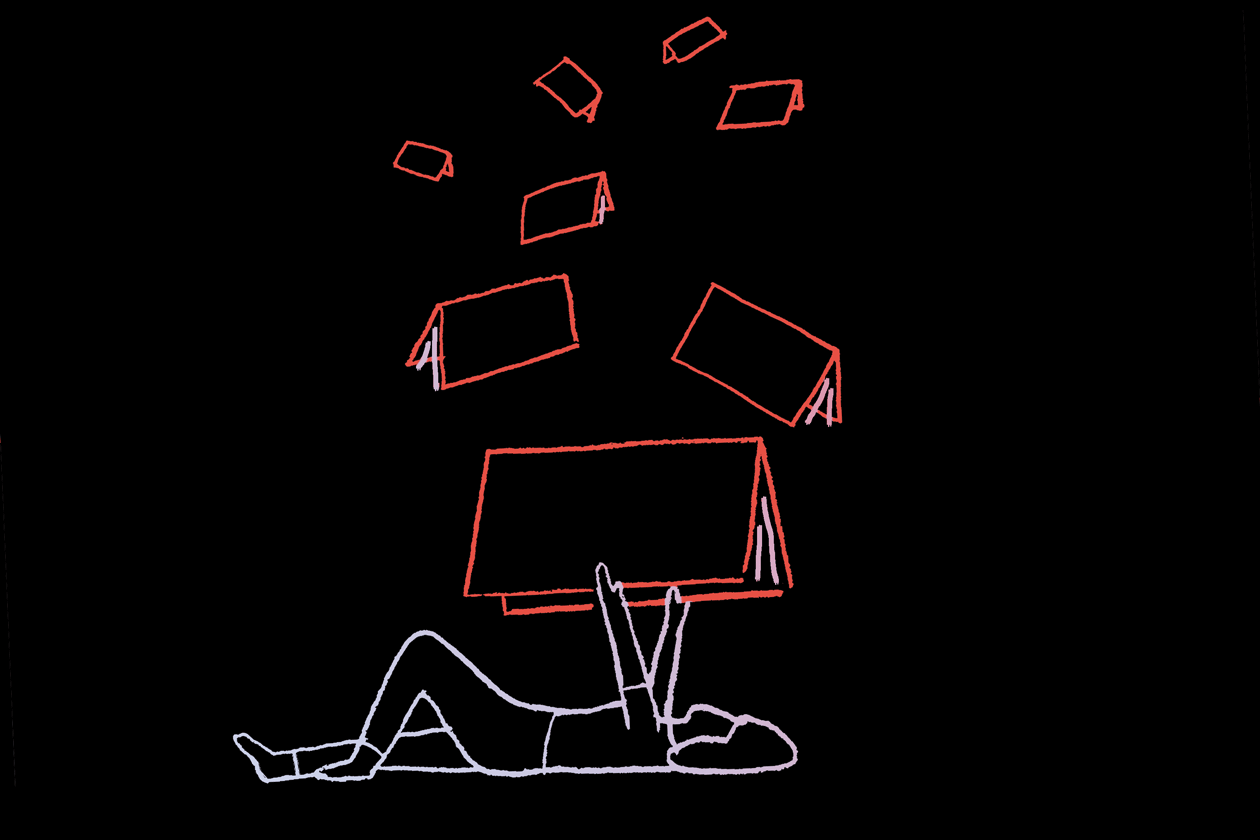
What do you tell the people you love about the thing you did that caused them pain? You have abashed phone conversations with your Calgarian grandparents. You lie to your aunt when she makes you promise you’ll never try again. You hold your breath and avoid the topic altogether. My mother’s mom, the Los Angelena Auschwitz survivor and the strongest nonagenarian I’ve ever met, I never tell, although my mom told her years later, on a harrowing impulse. She’s ninety-four, and I still feel ashamed just talking to her—the epitome of life’s triumph against all odds—having expended so much time and effort and brainpower toward my own death.
After two or three days in the ICU, they put me in the short-term psych ward. From the moment of my arrival, I studiously avoided shared spaces: the big table where patients congregated to watch the boxy dolly-mounted TV and, later, in the next ward I’d be admitted to, the TV and activity rooms where patients buzzed or lolled or sat. Introverted at my best, I spent my institutionalized time impotently attempting to construct personal spaces. Of course, there is no “me space” in a hospital, certainly not if you’ve been certified as posing a danger to yourself. No corner behind curtained dividers or unlatchable doors to effectively mark as one’s own. As my eyes improved, I resorted to my childhood proclivity for disappearing into books, pulling my consciousness through that escape hatch and shutting it behind me.
I grew to love the hospital’s intercom announcements. Code Blue for cardiac arrest; Code White for a violent patient; Code Yellow for a missing person, an elopee, as they’re called, a runaway for whom I’d silently cheer. Go, sixty-eight-year-old Caucasian man with short brown hair last seen wearing hospital pants and a brown wool cardigan and no shoes! Run!
Days were divided between Visiting Hours and Everything Else. My baby sister flew in, too beautiful and young and on the cusp of life to have to worry about this shit barely a month after I’d schlepped a printer uphill to her McGill University residence in Montreal. The five of us—my parents, brother, sister, and I—went outside the hospital for meals and pretended everything was fine. We went for a late brunch on Queen Street West and sat in a corner table by the window and all ordered variations on the same huevos rancheros, and my dad bought a stranger’s black-and-white photo off the wall. Their outward resilience and our collective ability to laugh at the most horrible things helped me get through without choking on my own guilt.
Most of my psych-ward time was deadly cabin fever: marathon pacing, ear-splitting earbud music, books that were never escapist enough to hold my splintered attention for long. A nurse-chaperoned trip down to the hospital’s belly for a brain scan felt like a vacation. I spent interminable minutes in a luminescent white Space Odyssey cocoon whose broad vocabulary of echoing blurps and bloops mimicked the sound effects of a retro sci-fi film. I learned the less-than-uplifting result of this diversion days later. An otherworldly neurologist—wide blue eyes growing wider, syncopated Scandinavian-accented voice slowing as she spoke—walked me through a series of white blobs I was told depicted my brain.
A dangly blob at the centre of the bird’s-eye image she introduced to me as my putamen was swollen thanks to the antifreeze I’d swallowed. I learned through later googling that, once in your system, the methanol in antifreeze metabolizes into formic acid, which can prevent your cells from grabbing and using the oxygen they need, ultimately killing you within about thirty-six hours. Your optic nerve and basal ganglia can be among the first bodily bits badly damaged in this process—either directly poisoned by formic acid or suffocated by lack of oxygen. Depending how badly damaged they are, you could be blind or shaky and off balance for the rest of your life.
(Three and a half years later, back in hospital following—SPOILER ALERT—another suicide attempt, a bemused doctor approached my ICU bed, scans in hand, wondering how a woman in her late twenties had the brain of a stroke victim. That’s apparently what medical images of my brain look like to people who aren’t expecting to encounter methanol’s neurological souvenirs.)
I was sure if I just acted normal enough they would let me go. I tried to be courteous, lucid and calm but not suspiciously upbeat. I didn’t weep or scream at my own frustration or impotence or exhaustion or insomnia or self-loathing. I met, as required, multiple times a day with nurses and social workers. And my I’m-totally-fine, suicide-was-a-one-time-
This isn’t, incidentally, best practice: it’s a great way to ensure people fall through the cracks and (if they’re lucky) wind up back in hospital in worse shape than before.
Unbeknownst to me, as I paced by my bed and prepared for life outside the windowless ward, my parents had pushed for a second opinion, my dad writing desperate, pleading emails at three o’clock in the morning. The second psychiatrist was smart and sardonic and treated me like someone capable of communicating in multisyllabic sentences. He also had a far better bullshit detector. He did not buy my argument that this whole suicide thing was an anomalous one-off, a mental misunderstanding, never to recur. He decided I had major depression. And that I was fucked up enough to merit more time locked up lest I try to off myself again.
Eight hundred thousand people around the world kill themselves every year, which means about 2,200 a day, or three every two minutes. Statistically, two dozen people killed themselves in the time it took you to get out of bed, showered, and caffeinated. Maybe forty-five during your commute to work, another ninety in the time you spent making dinner. Unless you, like me, take an eternity to do any of those things, if they happen at all. In which case, think of it this way: every time you mull killing yourself and manage to talk yourself down because you have more to do and more to ask of life, a handful of people have lost that internal, wrenching wrestling match and ended it.
In Canada, where eleven people kill themselves daily, you’re almost ten times more likely to kill yourself than you are to be killed by someone else. About 120 Americans kill themselves every day: Americans are more than twice as likely to die by their own hands as someone else’s. Victims of America’s gun epidemic are almost twice as likely to have shot themselves to death than have been shot to death by someone else. If you die young, suicide’s much more likely to be the cause: in 2016 it was the second-leading cause of death for Americans between ten and thirty-four years old. Many, many more people try to kill themselves than actually do it—about half a million Americans are brought to emergency rooms every year after having tried to end their lives.
The reality is likely even worse: evidence indicates we’re undercounting suicides by a significant amount—by as much as a third, depending how you guesstimate. For one thing, despite the supposed decrease in shame in having a family member kill themselves, our persistent societal freak-out regarding suicide can make both relatives and authorities hesitant to classify deaths as such. There’s a very high burden of proof required for coroners and medical examiners to classify a death as a suicide. There’s rarely incontrovertible evidence: most people don’t leave suicide notes, and not everyone talks about killing themselves before killing themselves. Even if they had at some point in the past, how do you know this specific incident was a suicide? If someone is depressed, even suicidal, but also misuses drugs, how do you know for sure whether an overdose is purposeful? How do you know for sure whether a single-vehicle crash was careless driving or driven by a need for death? How can you be certain whether someone slipped or jumped?
You’re more likely to find suicides when you look for them. And, much of the time, we don’t. Grieving families would frequently prefer not to touch the issue. “The underreporting of suicide is a recognized concern in Canada and internationally,” reads a 2016 study based on data from the Public Health Agency of Canada. Suicide deaths are also examined a lot less closely, on average: a 2010 report found that about 55 percent of US suicide deaths get autopsied, compared to 92 percent of homicides.
The more autopsies a county does, the more suicides it identifies, West Virginia University researcher Ian Rockett has found: if you spend more time investigating a death, you’re more likely to deem it intentional on the part of the deceased. He and his colleagues studied the rate of suicide classifications across counties and found that the more detailed death certificates are, the more time coroners or medical examiners spend on them, the better-resourced they are to be able to do so, the greater a county’s rate of deaths classified as suicides. Another study, which examined autopsy rates in thirty-five countries across Europe, the Mediterranean, and Central Asia similarly found that higher autopsy rates were correlated with higher suicide rates.
But we’re doing fewer autopsies in Canada and the States, not more: the percent of deaths subject to autopsy in Canada dropped by almost half between 2000 and 2011—from 9.9 percent to 4.8, “further subjecting suicides to misclassification,” the Canadian public-health paper reads. In the US, autopsy rates dropped by more than 50 percent between 1972 and 2007.
This has been a known issue for a while. The consequences of underreporting extend beyond public-health nerds who get off on accuracy. Undercounting suggests something is less of a problem than it is and therefore less deserving of our attention and our dollars. Which is convenient, given how icky suicide makes us feel in the first place. Finding fewer suicides can make it seem like suicide is less of an issue. “If you think about it, society hasn’t been that invested in suicide prevention,” Rockett points out. “If you more accurately portray the self-injury deaths and say, ‘This is mental health,’ there’s potential for rather more resources to be directed toward the problem.”
Botched suicide attempts also go underreported: many people who try to kill themselves either don’t seek medical help or lie about why they are seeking it. I’ve done both those things. I’d do them again. As I’ve said, telling anyone you’ve tried to kill yourself, let alone someone you don’t know, let alone someone who could suspend your right to freedom of movement, gives one enormous pause. (Not that telling someone you love is any easier.)
Infuriatingly but perhaps unsurprisingly, undercounting suicides, and therefore minimizing the self-destructive death toll and its magnitude as a public-health issue, is worse for marginalized populations. The suicide rate for white Americans in 2016 was almost three times that of Black Americans. “It didn’t make a lot of sense to me,” Rockett says. “I couldn’t think of any other major cause of death where Black [people] would have had an advantage.” Fact is that nonwhite North Americans are less likely than white people to get any kind of care for their depression, much less care that meets evidence-based standards. Far fewer Black people who’ve killed themselves or may have killed themselves took antidepressants in the year before their death than their white counterparts, which, given what we know about the role mental illness plays in the vast majority of suicides, suggests Black people are less likely than white people to get the psych treatment they need.
And then the same marginalization that makes you less likely to get treatment also makes it less likely your death will be classified accurately, because lack of documented depression treatment leading up to your death makes coroners more likely to classify your death as being due to an “injury of undetermined intent.” Which means we’re underestimating the toll this public-health crisis takes on our communities—and, therefore, the degree of need for prevention and interventions that could be directed toward it. Cascades of compounded marginalization.
How do you talk about trying to die? Haltingly, urgently: in messages and calls to friends. Abashedly: you stand in the middle of a hospital hallway on a parent’s cell phone as your grandfather bellows, “No more stupid tricks!” Gingerly: you stand in your psych ward at the patients’ landline, white corkscrew cord curled around your finger as you murmur to your grandmother who understands better than she should. Who is the first to tell you that you have to write all this down. And, even though you put it off for months, agonize for years, you know she’s right. Quietly, desperately: in one medical appointment after another. Trepidatiously: to colleagues. Searchingly: in interviews. Increasingly loudly. In a book? With the world?
A disorder hijacks your life and becomes an obsession. Know thine enemy. Chart in minute detail the way it wrecks you and seek every aliquot of information out there. Butt up against the constricting limits of human understanding, smash yourself against that wall, and seek instead to map the contours of collective ignorance. Know the unknowns of thine enemy, learn them by heart. Because even if you never best it, never loosen its grip on your existence, at least your best attempt at understanding will give you some semblance of agency.
No one wants this crap illness that masquerades as personal failing. I had no desire to plumb its depths. The struggle to function leaves me little capacity to do so. But, in the end, I had no choice. I approached this enemy I barely believed in the only way I knew how: as a reporter. I took a topic about which I knew nothing and sought somehow to know everything. I talked to people in search of answers and mostly found more questions.
Personal experience has made me more invested in addressing the gross inequities depression exacerbates, in hammering home the human, societal, economic costs. The depth of depression’s debilitation and our reprehensible failure to address it consume me because I’m there, spending days paralyzed and nights wracked because my meds aren’t good enough. But this isn’t some quixotic personal project that pertains to me and no one else. Depression affects everyone on the planet, directly or indirectly, in every possible sphere. Its very ubiquity robs it of sexiness but not urgency.
Writing in public is also my way of exorcising endless guilt at having been so lucky—to have benefited from publicly funded inpatient and outpatient mental-health care, to have maintained, for the most part, employment, to have had patches of insurance lighten the burden of paying for years of drugs. This shouldn’t be the purview of the privileged, but it is. We fail the most marginalized at every level, then wonder why they worsen.
It’s been almost eight years since I first tried to kill myself and more than four years since I first started poking at the idea of writing a book about this basket-case condition, and there are days I wake up and any possibility of improvement, any chance that I could ever get better, is drowned in the undertow of despair. But not every day has been like that. For long periods, most days I have made it into the newsroom at Reuters, where I work. And, most days I work, it feels good—like I’m building ground beneath my feet even as I struggle to keep from plummeting.
I couldn’t tell you if I’m any better off than I was the September of my first suicide attempt. I know I’ve gone through periods, some quite recent, where I was worse. But work on this project gave me something to cling to and build on. It was validating. Almost every interview I did reinforced that this illness is genuine and genuinely awful and affects many, many more people than me. Those were days that made it seem worth plugging away.
This is not a triumphant story. No one finds herself; no one is saved, although some remarkable people do incredible things. There is no happy ending. It’s an uncomfortably personal exploration of a sickeningly common illness no one likes talking about, one that remains undertreated and poorly treated and grossly inequitably treated in part because of our own squeamishness in confronting it or our own denial of its existence as an illness and the destruction it wreaks when left to its own devices.
It doesn’t have to be this way. There are pathways to compassionate, equitable, informed care for an illness that pummels too many for too long without respite. But we need to act like this is something we care about.
This article has been excerpted and adapted from Hello I want to Die Please Fix Me by arrangement with Penguin Random House Canada.
If you or someone you know is having a suicide crisis, please call the Canada Suicide Prevention Service (1-833-456-4566), which offers 24/7 support. There is also Kids Help Phone, the First Nations and Inuit Hope for Wellness Help Line, and 1-866-APPELLE (Quebec residents).

